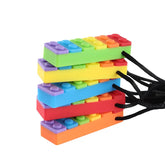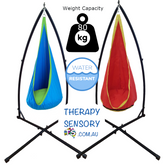Fidget Toys in the Classroom.
- Fidget Toys in the Classroom.
What is a fidget toy?
A fidget is a small object (preferably one that fits in a child’s hand), that can be squeezed, pulled, or moved around as a child is sitting and listening. For example at group times, listening to a story or waiting for a turn during a small group game.
What are the reasons for using fidget toys?

Some people need to move in order to be able to concentrate, learn and be calm. Think about when you are in a meeting or a waiting room; there is often someone tapping their foot or clicking their pen up and down.
In an Early Childhood setting, children who fidget a lot and/or find it hard to sit still, are often seeking extra sensory input. That they cannot obtain from the environment.
Some refer to this as a high threshold to neurological input, and as such, the more input that some children get, the more alert and organized their minds can be. The concept of fidget toys is based on the theory that some children are seeking things to touch and feel. They may be doing this to provide the ‘just right’ amount of sensory input in order to calm their nervous system.
In a classroom or group situation, fidget toys are often used to provide sensory input in a minimally distracting way. They can help improve concentration and attention to tasks by allowing the brain to filter out the extra sensory information. (e.g. paying attention to a book during a mat time) By having a fidget toy, a child may be able to better ‘filter out’ excess sensory information in their surroundings and their body, which is causing distraction. The fidget toy may encourage this sensory information to be focused on a toy in the hands. A fidget toy may also provide a distraction or stress release for a child who is anxious or feeling overwhelmed.
How do I successfully implement fidget toys?
- Ensure that your fidget toys are safe, small enough (particularly for use in a classroom), not noisy and able to be used without distracting others too much. It is important to store your fiddle toys in one central location, so you know where to access them for quickly if needed. A teacher’s desk, child’s desk, or quiet corner all work well.
- It is also necessary to communicate to the group of children what the purpose of fiddle toys are to help some children sit still and concentrate on certain tasks. They often look like party toys and some children may like to explore them in inappropriate ways for a laugh.
- It may be worthwhile to factor in some of these questions when choosing and using fidget toys:
Questions to consider when choosing fidget toys:
- What are the foundation skills of the child? Eg: Does the child have enough hand strength or motor skills for a specific toy?
- Does the child have sensory preferences? Are there textures, shapes, sensations they will avoid?
(Remember to try and provide toys that will be sought and will provide a calming influence)
- What times during the day does the child seem most fidgety? When would they most benefit from having a toy? Consider after recess or lunch to help bring them down from a heightened state. (show children running in playground)
- What are the rules around using the toy? Eg: Hold the toy when sitting upright on the mat, hold it in your hands only, place it in the special red box after story time etc. If children do not follow the rules, the fiddle toy may be put away.
- Sometimes other children in the group request to have a fiddle toy because they look interesting and novel. What will you tell other children who ask for one?
(Consider saying that some children need help to be able to sit still and concentrate, whereas others don’t. The children that already sit well at mat time can help by role modelling for the children who find it challenging.) Also consider that It could be a reward for other children who are showing the desired behavior.
CONSIDER: Some children may not be developmentally ready to engage in a group experience. Consider a calm area containing fidget toys where the child can sit and play instead. Always provide the child with a choice; but make your expectations clear. E.g. Would you like to sit in the Calm Area or on the mat?
















